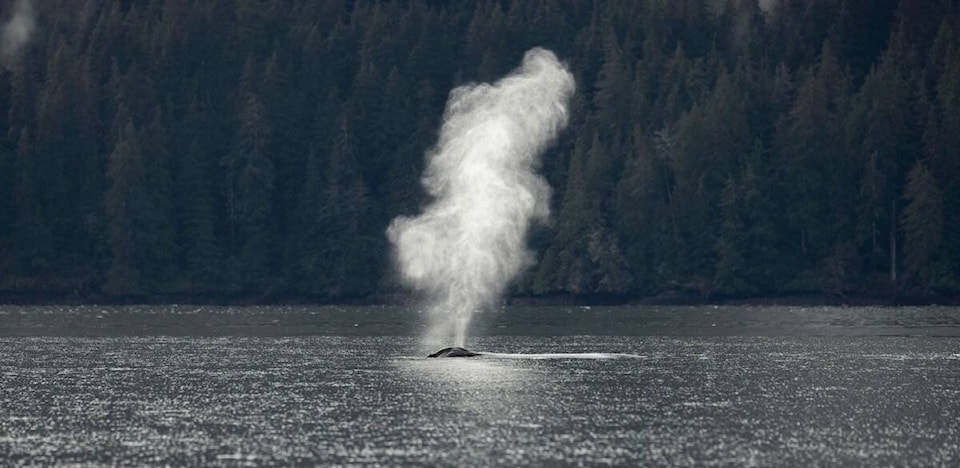Written by Debra Lynn
With whale sightings become more prevalent around Port Alice, people might like to know just “who” is hanging around the neighbourhood these days.
Local humpback whales are catalogued and studied by the Marine Education and Research Society (MERS). They identify the whales by the fin on their backs (dorsal fin) and by their tails, or “flukes.” When they emerge out of the water, their unique markings and characteristics indicate to those of us in the human realm which whale individual it is.
Whales are given an “official” name by the Canadian Pacific Humpback Collaboration, which is a series of numbers and letters that are not easy to remember. For better relatability, MERS gives the whales nicknames based on their distinguishing features. Co-founder and director, Jackie Hildering, posted in her Sept. 25, 2019 MERS blog, “These nicknames allow for the potential for greater public engagement and thereby, conservation. The nicknames also really, really help us recognize the whales which is the foundation of all our other research.”
Whale BCZ0220, has been given the name “Whiskers” by MERS because of a cat-like face on her tail.
In 2019, Whiskers was spotted near Port Alice with a calf and another whale by photographer Darrell McIntosh. Hildering later held a video call with the students of Sea View School from her research vessel to get some ideas for nicknames for the these newest members of the Port Alice whale community.
Whale BCX1100 that was travelling with Whiskers and her calf had an injured fluke.
The cause is unknown. In her blog post, Hildering stated, “The injury dates back to before 2010 and possible causes include vessel strike and entanglement.”
Hildering explained to the children how a nickname provides a clue for who the whale is. The children then asked questions that indicated concern for the whale BCX1100 and how, because of its injury, it might not be able to swim as well as other Humpbacks.
With the Sea View School annual Terry Fox Run happening around that time, the students came up with the idea that BCX1100, the handicapped whale that was able to swim to Port Alice from Hawaii or Mexico, should be nicknamed “Terry” after Terry Fox and his Marathon of Hope.
The children then named Whiskers’ calf “Poseidon” because of a bright white marking on the calf’s fluke that looks like Poseidon’s trident.
In 2020, when Poseidon was a year old and emancipated from his mother, he was spotted on the other side of Vancouver Island feeding near Port McNeill and Telegraph Cove.
In an email to the North Island Gazette, Hildering states that, based on comments received from the public, people may not realize they are likely looking at the same whales again and again. Sightings support that there have been five or six individuals in the Port Alice area each year since 2019.
Humpback whales migrate to the warmer waters of Mexico and Hawaii to breed and give birth to their young in the winter, then return to cooler, nutrient-rich waters to feed for the rest of the year. The same whales usually return to the same area to feed.
Other humpbacks that have been spotted in the Port Alice area and have been subsequently nicknamed include: Sponge Bob (BCY1138), Howl (BCY0779), Winnie (BCY0462), Potamus (BCY0885), Bullwinkle (BCZ0083), Hammerhead (BCY1135), Dandelion (BCY1107) and Halberd (temporary ID BCNF2022#15).
For more information about the whales, whale research and supporting activities, visit mersociety.org.
Have a story tip? Email: editor@northislandgazette.com
Like us on Facebook and follow us on Twitter.
